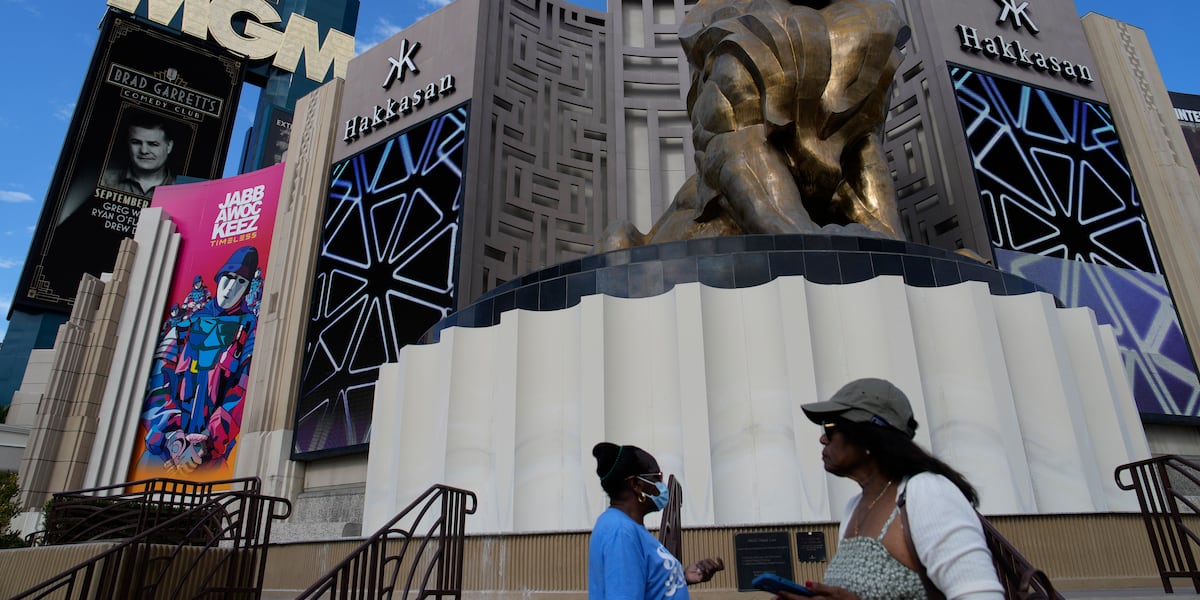Entertainment
Plans for downtown San Antonio district, Spurs arena unveiled

An ambitious plan unveiled Thursday to develop an expansive sports and entertainment district in San Antonio comes with a new Spurs arena in the heart of downtown.
City staff put several years’ worth of speculation to rest when they detailed “Project Marvel,” the code name for a sweeping vision centered around a new basketball stadium and an expanded convention center.
The proposal, revealed during a city council special session and in a Wednesday pre-briefing, also includes a new convention center hotel tower, an improved Alamodome, acres of retail and residential development, new roads and infrastructure and a land bridge spanning Interstate 37.
The first phase of the plan, which encompasses the arena and convention center, would be implemented within the next five years, said City Manager Erik Walsh. The I-37 land bridge and improvements and redevelopment at the Alamodome could take up to 15 years.
So far, the entire proposal is only a concept and feasibility studies are needed, Walsh said. To pull it off, the city could sign a memorandum of understanding with Bexar County, which owns the Frost Bank Center on San Antonio’s East Side where the Spurs currently play, along with Spurs Sports and Entertainment.
The convention center is the priority, he said. Staff will return to council on Dec. 4 with a briefing on how it could be expanded to add a ballroom, exhibit hall and other meeting spaces and amenities.
Until all studies are done, the total project cost for the district is unknown, Walsh said, as well as the breakdown between funds from the city, Bexar County, the Spurs and taxpayers through a possible ballot initiative.
Widely reported estimates of a $3-4 billion price tag came from emails Assistant City Manager Lori Houston wrote to prospective consultants, she said. “The intent was to show how big this project was.”
Walsh laid out several possible sources to fund the district, including private investment and development, revenue from hotel and rental car tax, county venue taxes, and financing tools like Public Improvement and Municipal Management districts.

Some funding mechanisms for the district are already in the works.
Last year, City officials designated the Henry B. González Convention Center as a renovation project that would benefit from the state’s Project Financing Zone.
A PFZ allows the city to draw a 3-mile radius around a convention center facility or venue, then collect the growth in the state’s revenues from hotels and businesses within its boundaries for a 30-year period to spend on qualified projects.
A general obligation bond could be used to pay for the sports and entertainment district but would need voter approval, he said.
A $2.9 million federal grant from the Transportation Department aiming to reconnect communities separated by the nation’s highway system will be used to draw up plans for a proposed land bridge, similar to the Rock Island Bridge project in Kansas City.
“We have a lot more work to do in terms of due diligence and feasibility,” Walsh said. “One of the main components of this … is the opportunity for additional retail and development, which includes housing [and] mixed-use. We have space to be able to do that, and frankly, that’s going to be a critical part of this, because that investment is going to be needed.”
Developable land in the southeastern quadrant of Hemisfair and east of the highway provides sufficient acreage to form the district, Walsh said.
“Everything can fit,” according to Populous Consulting, a firm hired by the city to evaluate the project, he said. That’s if the hulking and shuttered UTSA Institute of Texan Cultures (ITC) is demolished.
A map by Populous shows the arena being built in place of the ITC, a remnant of the 1968 World’s Fair recently designated state antiquities landmark. In February, the University of Texas Board of Regents gave UTSA conditional approval to negotiate with the City of San Antonio to buy or lease the property.
The former museum makes up roughly 13.5 acres in the public-private development in Hemisfair — space enough for a sports arena, according to some experts.
The district would also displace the San Antonio Water System’s chilling plant for a 1,000-key hotel tower with 20,000 square feet of space dedicated to a UTSA School of Hospitality, and a parking garage with more than 1,000 spaces.
The John H. Woods Courthouse, formerly the Confluence Theater, is shown recast as a live performance venue. The city acquired the facility from the General Services Administration in 2022 and also has the right of first refusal on an adjacent federal building and parking lot.
Once projects are deemed by council as feasible, the city will kick off a public engagement process around planning and designing, according to staff.
The vision for a sports and entertainment district follows major growth and investment in downtown San Antonio in recent years and that makes the timing right, said Mayor Ron Nirenberg.
“We’re beginning to see opportunities to improve downtown for not just tourists, but for locals,” Nirenberg said, adding that now is the time to turn a collection of projects into a vision for downtown San Antonio.
The arena and district plan come just weeks after the city and county signed agreements with the owners of the Missions baseball team to redevelop the northwestern quadrant of downtown San Antonio and build a new ballpark.
A 2-acre parking lot owned by the San Antonio Independent School District appears to be all that’s standing in the way of the $1 billion project.









